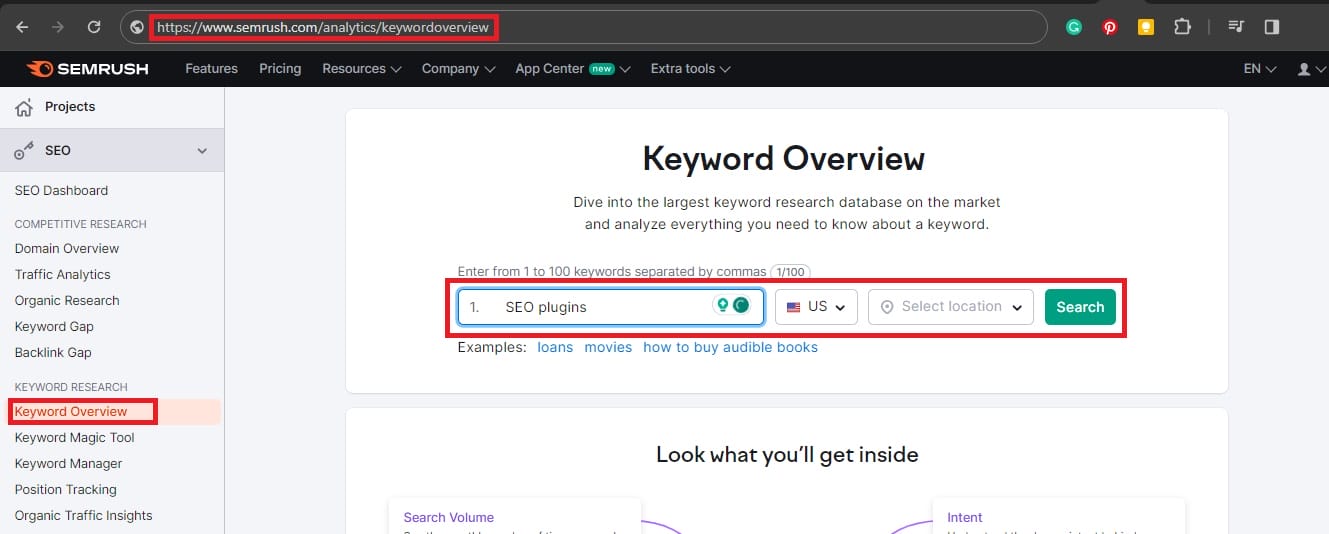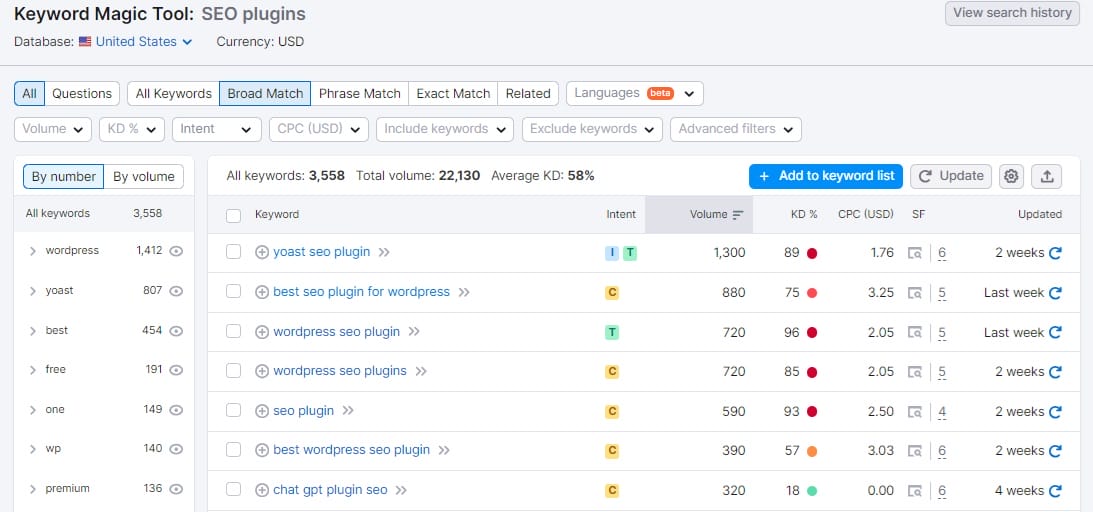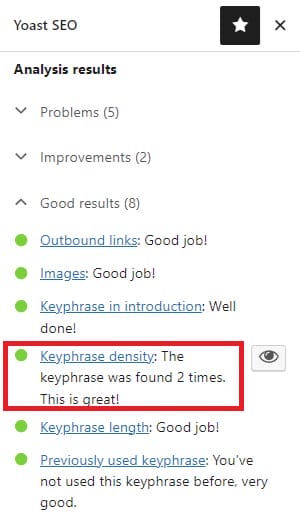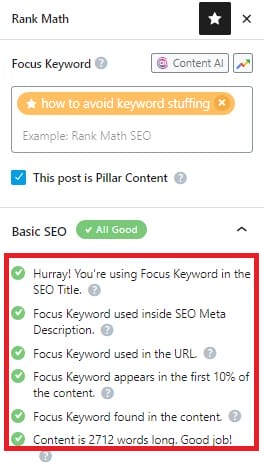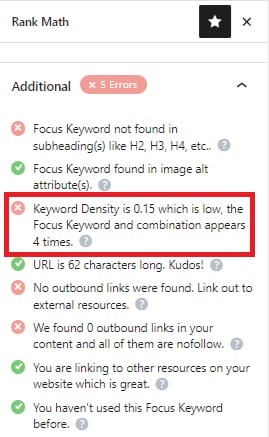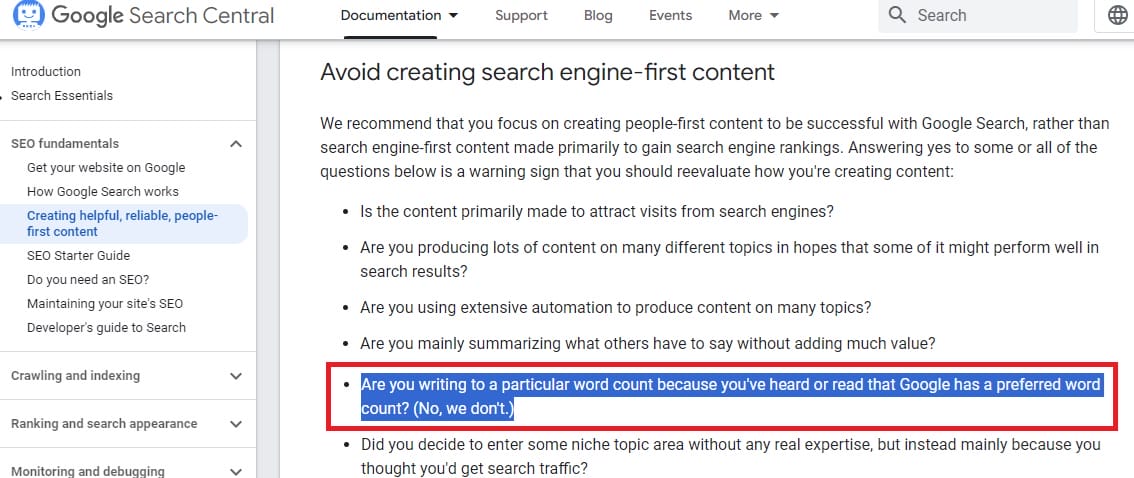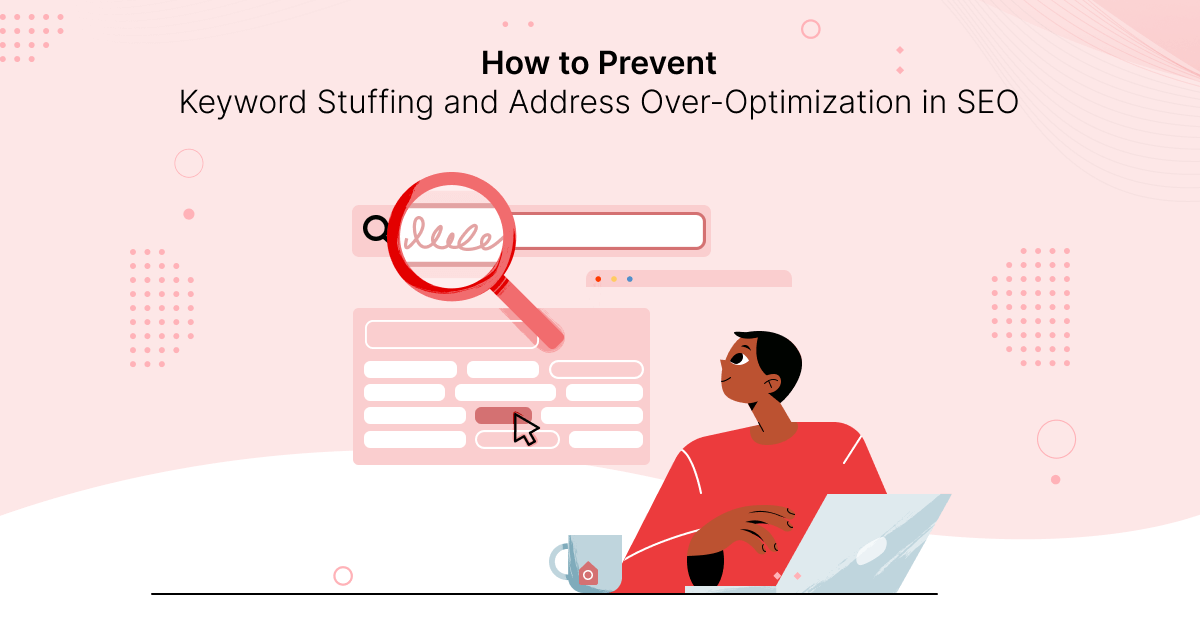
Make no mistake about it, there’s a fine line between optimization and over-optimization for SEO.
Get carried away with the techniques and strategies used to rank your content, and you’ll find your content falls squarely into the latter category, a problem that can spell major trouble for the long-term success of your site.
In this comprehensive guide, we’ll teach you how to prevent one of the most common over-optimization misfires -keyword stuffing- as well as offer our top tips and solutions to help you avoid going too far in the wrong direction with other crucial SEO (Search Engine Optimization) elements.
Why is Over-Optimization for SEO a Problem?
Over the course of the past decade, the nature of the web -and search in particular- has dramatically changed.
It used to be that cramming your target keywords into a post as many times as possible and generating as many backlinks as possible regardless of their quality was a genuine approach to maximizing your search visibility.
Now, those tactics, and many like them, are considered black-hat SEO, especially as Google continues to push site owners into a people-first approach to Search Engine Optimization.
Keep relying on archaic SEO techniques or overzealous use of contemporary strategies, and you’ll likely find that your approach seriously backfires, impacting both your user experience and your ability to rank highly.
The Impact of Search Over Optimization on User Experience
For one thing, stuffing your content full of keywords with little to no regard for readability can be a major turn-off for your audience, sending them reaching for their back button and damaging your bounce rate.
What’s more, overly aggressive SEO tactics can make your website appear spammy and untrustworthy, damaging your brand reputation and discouraging potential customers.
How Doing Too Much SEO Impacts Your Search Performance
Overdoing your search engine optimization will send major red flags to Google that you’re trying to game their system rather than create genuinely helpful content for your audience.
As a result, you’re likely to find that the search giant demotes your content in SERPs, resulting in less traffic and fewer conversions.
This isn’t something you want to take lightly.
After all, with over 95% of the market share in the search industry, Google drives more organic search traffic than any other platform.
That’s before we even mention that websites hit with a penalty for violating the company’s Webmaster Guidelines see their organic search traffic reduced by as much as 50%, while 70% of penalized sites fail to recover their rankings within 12 months.
With that in mind, the last thing you want to do is to fall foul of their system and lose out on rankings.
Do so, and your site may as well not exist.
How to Prevent Keyword Stuffing in 4 Easy Steps
While keyword stuffing isn’t the only way you can inadvertently over-optimize for SEO, it is a common mistake that we see a lot of rookies make.
Given how much emphasis most SEO marketing advice places on keyword research, this isn’t too surprising, but it is something that needs to be addressed if you want your keywords to work for you rather than against you.
Here’s four ways to do that:
1. Utilize Secondary Keywords and Keyword Variations
Creating fresh, high-quality SEO content typically starts with selecting a primary keyword.
This is a word or phrase that gives both readers and search engines a clear idea of what your content is about, such as best WordPress SEO plugins or NFL scores.
The problem, particularly in long-form content, is that it’s easy to get carried away and repeat this primary keyword too often throughout your piece.
After a certain number of uses, you’re not only getting diminishing returns from this keyword, but you’re also running the risk of verging into keyword-stuffing territory.
When you do so, there’s a good chance that your finished content will actually have the opposite of your desired effect.
That is, instead of ranking highly in Google and getting lots of new visitors from your content, Google is going to see that piece as an example of over-optimization and either banish your piece so far down the search results that it may as well not be there, or choose not to rank it at all.
The trick to avoiding this is to mix things up, using your primary keyword sparingly and strategically while blending in related, secondary keywords and keyword variations.
Ultimately, this helps to keep your content focused and on point while preventing the kind of robotic repetition that can be jarring for readers and unappealing for search engines.
You can find these related and variation keywords using a free keyword research tool like the Semrush Keyword Overview Tool.
To begin, open Semrush in your browser, log in to your free account (or create one if you don’t already have one), and navigate to Keyword Overview.
From there, type in the main, primary keyword you want to target with your post, and click Search.
Next, scroll down past the keyword data until you get to the Keyword Ideas tab, where you’ll find a handy list of keyword variations and related questions waiting for you.
Clicking on view all for either of these lists will bring up even more options that you can explore, helping you to create a concrete list of supporting terms that not only steer you clear of keyword stuffing penalties, but also make your content more rich and diverse for readers.
2. Write For Humans, Not Search Engines
Once you have your list of primary, supporting, and variant keywords in place, the secret to success involves weaving them naturally into your content in a way that flows smoothly and reads in a way that reflects the way humans actually communicate with one another.
Trying to jam a keyword into a sentence just to be able to say you’ve included it can cause two big problems, especially if that keyword disrupts the flow of your writing.
First of all, a keyword that stands out like the proverbial sore thumb in the middle of an otherwise well-crafted paragraph can be glaringly obvious to your readers.
It takes them out of the natural flow and, worse, can erode any sense of trust and credibility you’ve established with your audience when they realize that you care more about meeting your keyword quota than actually helping them with their problem.
Secondly, if your audience can pick up on unnatural keyword placement, so can Google, and -as we’ve undoubtedly made clear by now- once Google knows what you’re up to, it’s pretty much game over for that piece of content.
With that in mind, be sure to read through your content to look for obvious signs of keywords that disrupt the natural human readability of your work and consider how your supporting keywords or other related synonyms might work better in each instance.
3 Adhere to SEO Best Practices for Keyword Usage
Despite everything we’ve said so far, you do still need to use your target keyword to enhance user and search engine understanding of your content.
The trick is to strategically place them throughout your content where they’re going to be of maximum benefit.
You can do this by adhering to basic SEO best practices, naturally incorporating your primary keyword in the following places:
- Once in your page title, as close to the beginning as possible
- Once in your meta description, as close to the beginning as possible
- Once in the first 100 words of your introduction (ideally in the opening paragraph)
- Once in your first and last H2
- Once in the first 100 words of your conclusion (ideally in the opening paragraph).
You should also be sure to naturally incorporate your keyword and multiple variations of it into your image alt tags to further strengthen your Search Engine Optimization efforts.
4. Use a WordPress Plugin to Keep Track to Monitor Keyword Density
Keyword density refers to the frequency with which a specific keyword or phrase appears within a text, usually expressed as a percentage of the total word count. It’s a way to measure how prominently a particular topic is featured within a piece of content.
As a general rule, you want to stick to a keyword density of between 0.5% – 1% for any given keyword, meaning no more than 5 – 10 uses of any given keyword per 1,000 words.
The good news is that as a WordPress user, you don’t have to waste time calculating your keyword density for every post as there are a plethora of free and premium WordPress SEO plugins that will automatically do it for you.
If you use the industry-leading Yoast SEO plugin, for example, you can look at the SEO Analysis tab to discover whether you’re under or over-optimizing your post for your target keyword.
The best part is that Yoast’s new AI capabilities mean it can even create well-optimized meta descriptions for you.
See our Yoast SEO review to discover whether it’s the right plugin for you.
If it’s not, you may find RankMath to be the best alternative.
Here, Basic SEO tab will tell you if there are any strategic locations where your focus keyword is missing, while the Additional tab helps you keep tabs of your Keyword Density score as you write.
1. Link Building
A. Excessive Exact Match Anchor Text
While relevant anchor text is valuable, stuffing every link with your target keyword screams manipulation. Diversify your anchor text with natural mentions, brand names, and related variations.
B. Link Schemes and Unnatural Patterns
Building hundreds of links overnight from unrelated sources triggers red flags. Focus on quality over quantity, prioritize organic outreach to relevant websites, and maintain a natural link profile.
C. Paid Link Networks and Link Buying
Google frowns upon paying for links. Engage in genuine partnerships, guest blogging, and content creation to earn organic backlinks the right way.
2. Content
A. Quantity Over Quantity
Churning out thin, low-quality content just for no other reason than to improve search rankings is both a bad idea and a waste of time.
Google even confirms that they don’t have a preferred word count:
As such, it’s a better idea to prioritize in-depth, valuable content that engages users and establishes your expertise rather than trying to hit a specific word count.
B. Ignoring Search Intent
Few things are more crucial to effective SEO than a solid understanding of the user intent behind users’ search queries.
Understand exactly what it is your users want to find and create content which makes it easy for them to find it, rather than just creating content to target certain keywords.
3. On-Page and Technical SEO Optimizations
A. Keyword Cannibalization
Targeting the same keyword for multiple pages confuses search engines and dilutes your ranking potential. Conduct thorough keyword research to ensure clear differentiation and topic authority for each page.
B. Click-Bait Metadata
Clickbait-y meta descriptions that don’t accurately reflect page content lead to high bounce rates and penalty risks. Ensure that both your titles and descriptions are clear, concise, and relevant to the actual page content.
C. Excessive Internal Linking
Linking everything to everything dilutes the link juice and confuses users. Strategically link relevant pages to create a natural flow of information and user experience.
How to Address Keyword Stuffing and Over Optimization for SEO: Key Takeaways
While keyword research tools like Semrush and SEO plugins such as Yoast SEO can all help you keep your keyword use under control, the real secret to preventing over-optimization is to simply adhere to the golden principle of search engine optimization.
Focus on your audience.
Yes, it’s important to add keywords in your titles and meta descriptions to help search engines understand your work and ensure it’s indexed for relevant search terms.
Beyond that, however, you’ll generate far more SEO gains by creating natural-sounding, helpful content for humans than you ever would trying to game Google’s complex and ever-shifting algorithms.
To do that, remember the following key takeaways from this guide and implement them into your optimization efforts:
- Deploy Primary Keywords Strategically – Your focus keyword should be present in key locations such as the title, intro, meta description, and first subheading. Beyond that, only rely on your primary keyword when it’s necessary and relevant within the context of your content.
- Expand Your SEO vocabulary – Use secondary keywords, related terms,and alternative keywords to keep your content on point without relying on the same one or two terms.
- Focus on Quality Over Quantity – Avoid an abundance of internal links and steer clear of unnatural, spammy backlinks that could do your site more harm than good.
Following these best practices will do much more for you than simply keeping your site in Google’s good graces.
It also leads to much richer, more engaging content that stands a better chance of holding your audience’s attention in its grasp, meaning more time spent on your site, lower bounce rates, and possibly even higher conversions.
For more advice on how to ensure your content is optimized for success, check out our detailed guide to creating a content audit.
